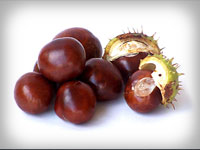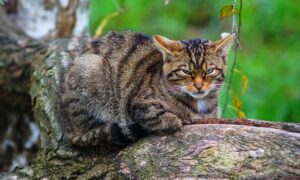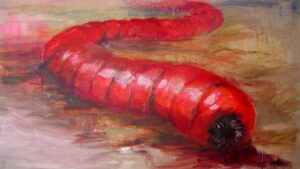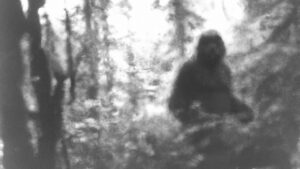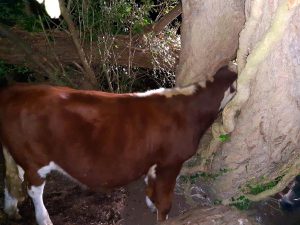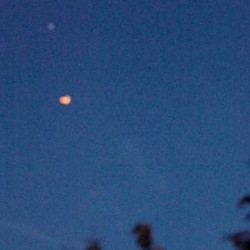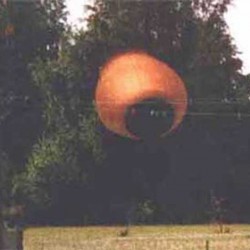
A common insect called the leaf miner moth (Cameraria ohridella) does more long-term damage to conker trees (horse chestnut) than thought.
Previously the moth was thought to cause only cosmetic damage, but a study published in the journal Urban Forestry & Urban Greening shows the moth larvae attack the tree’s leaves, reducing their ability to capture sunlight and turn it into food.
This loss in ability to produce energy, dramatically reduces seed size and quality, potentially stunting the tree’s growth.
The horse chestnut tree was first introduced to the UK in the 1600s. Its white flowers are now a common sight in UK towns, cities, parks and woodlands. However, over the past eight years, this tree has been under attack by the leaf miner moth Cameraria ohridella.
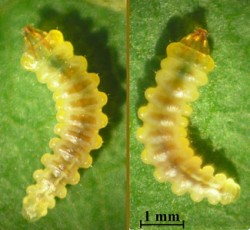
Horse-chestnut leaf miner
The horse chestnut leaf miner (Cameraria ohridella) is a leaf-mining moth of the Gracillariidae family. It was first observed in Macedonia in northern Greece in the late 1970s, and was described as a new species in 1986. Its larvae are leaf miners on the Common Horse-chestnut (Aesculus hippocastanum), causing significant damage to the appearance of the trees.
The larva digs its way into the leaves of the tree, damaging the leaves and stunting growth. Infected leaves are covered in small brown patches which spread rapidly across the entire tree, giving an autumnal appearance. Eventually the leaves die and drop off; when new ones grow they are again infected. This cycle can repeat itself several times in one season.
Cameraria ohridella has now been found in Ukraine, England, Belgium, Croatia, the Czech Republic, Denmark, France, Germany, Hungary, Italy, the Netherlands, Poland, Serbia, Slovenia, Sweden and Switzerland. Although it thrives in warmer climates, where it can achieve as many as six generations a year. Its natural enemies are parasitic wasps, but there are few of the required species in Europe, meaning there is next to no natural control.
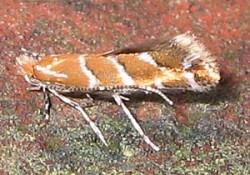
The moth grows up to 5mm long, their forewings are shiny, bright brown with thin, silvery white stripes, the hindwings are dark grey with long fringes. Each female moths lays between 20 and 40 eggs singly on the upper surface of leaves, and once these hatch 2–3 weeks later, the larvae develop through five feeding phases (or instars), two prepupal phases and one pupal phase. The first stages create a small cavity (or mine) in parallel to the vein in the leaf and are considered to be “sap sipping” rather than “tissue feeding”. By the third instar, the larvae create a mine approximately 8mm in diameter; this is further expanded by later instars until one mine can cover several square centimeters. The larvae start to pupate around four weeks after they hatch and emerge as adults around two weeks later.
Control and Prevention
There are few natural predators of the larval stages. Observations have shown that blue tits (Parus caeruleus), great tits (Parus major) and marsh tits (Parus palustris) do feed on the larvae. Between them, they are thought to predate between 2 and 4% of the larvae. The southern oak bushcricket (Meconema meridionale) has also been found to predate Cameraria ohridella, consuming around 10 larvae per day. Overall the predation by the southern oak bushcricket is insignificant compared to that by birds. Experiments with the predatory mite, Euseius finlandicus, bush crickets, ladybirds and lacewings, found that none predate Cameraria ohridella.
Original Source: BBC Earth News.
Reference Source: Wikipedia – Horse-chestnut leaf miner.

